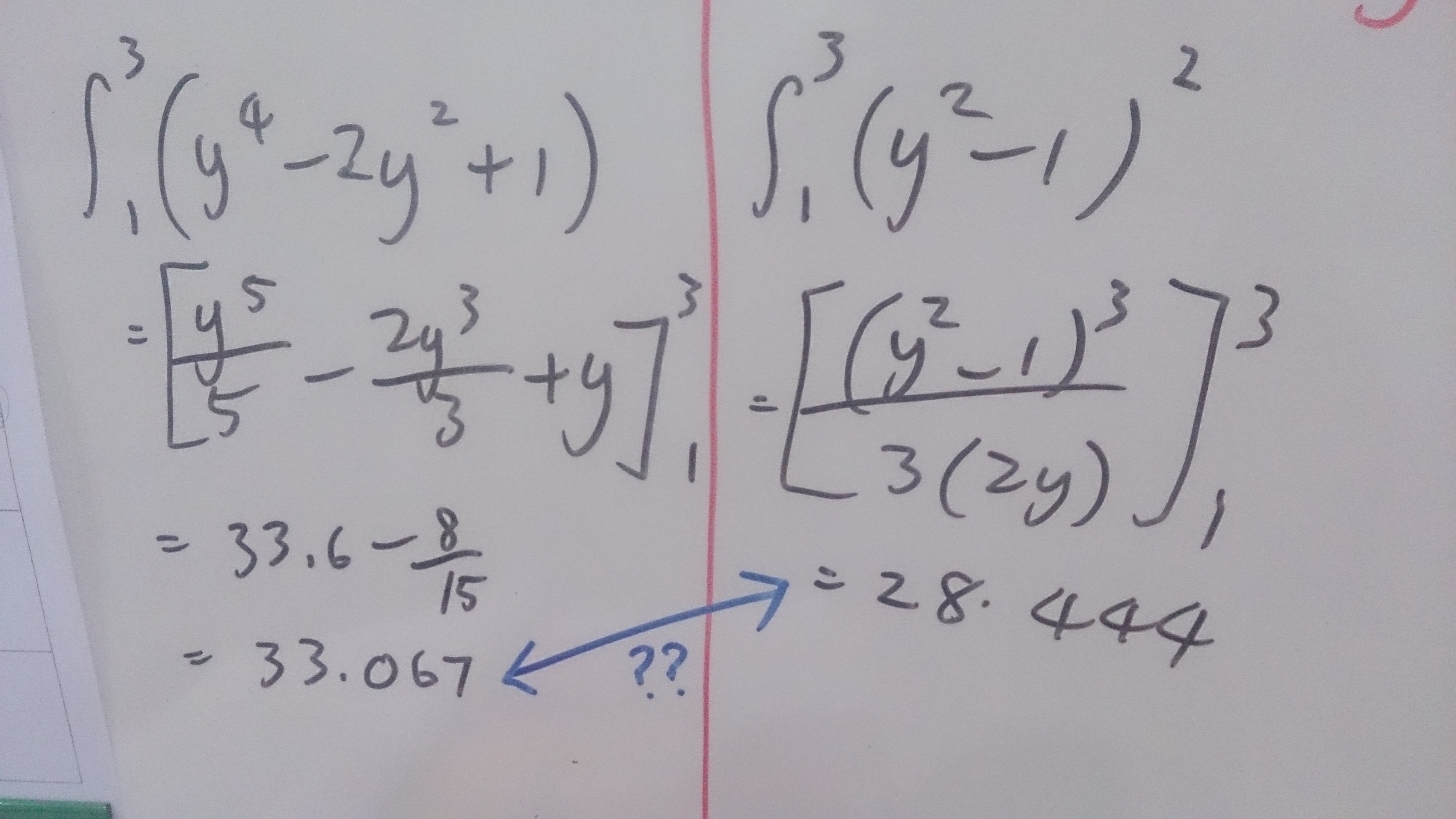Extremely Weird Integration.

(y^2 - 1)^2 = y^4 - 2y^2 + 1 . Aren't both equation the same? Why after integration , the answers become different?
Can anyone explain it?
No vote yet
1 vote
Easy Math Editor
This discussion board is a place to discuss our Daily Challenges and the math and science related to those challenges. Explanations are more than just a solution — they should explain the steps and thinking strategies that you used to obtain the solution. Comments should further the discussion of math and science.
When posting on Brilliant:
*italics*or_italics_**bold**or__bold__paragraph 1
paragraph 2
[example link](https://brilliant.org)> This is a quote# I indented these lines # 4 spaces, and now they show # up as a code block. print "hello world"\(...\)or\[...\]to ensure proper formatting.2 \times 32^{34}a_{i-1}\frac{2}{3}\sqrt{2}\sum_{i=1}^3\sin \theta\boxed{123}Comments
The integration of (y2−1)2 is incorrect. You seem to have used something similar to the chain rule of differentiation, which is not applicable to integration. The correct way to do it would be to expand and continue as you did on the left hand side.
Log in to reply
(I'm a student in malaysia) but the formula is in d text book ? Are there ways to do that without expanding ?
Log in to reply
Could you please post a picture of the formula in your textbook? And no, there's no quicker way. However, if you write the integral as the limit of an infinite summation, you will obtain the correct answer but after a lot of tedious calculation.
Log in to reply
Sorry , not text book , it's reference book. Maybe they wrote it wrong.
Thank you so much :D , i wondered about it for so many days
Log in to reply
No problem! Useful tip: check your integration by differentiating your answer.
You have performed the integral of (y2−1)2 incorrectly.
Log in to reply
What is the correct steps?
I check both so many times , can't find anything wrong with it.
You can not divide by 2y, that only works when the derivative of the inside is a constant. In your case it was 2y which is not a constant. Hope that helps
Log in to reply
Thank you. That was a clear explanation !
(btw , why 2y is not constant ? Isit because y^2 can be ± ?
The integration of (y^2 - 1)^2 is incorrect. therefore you got different computation